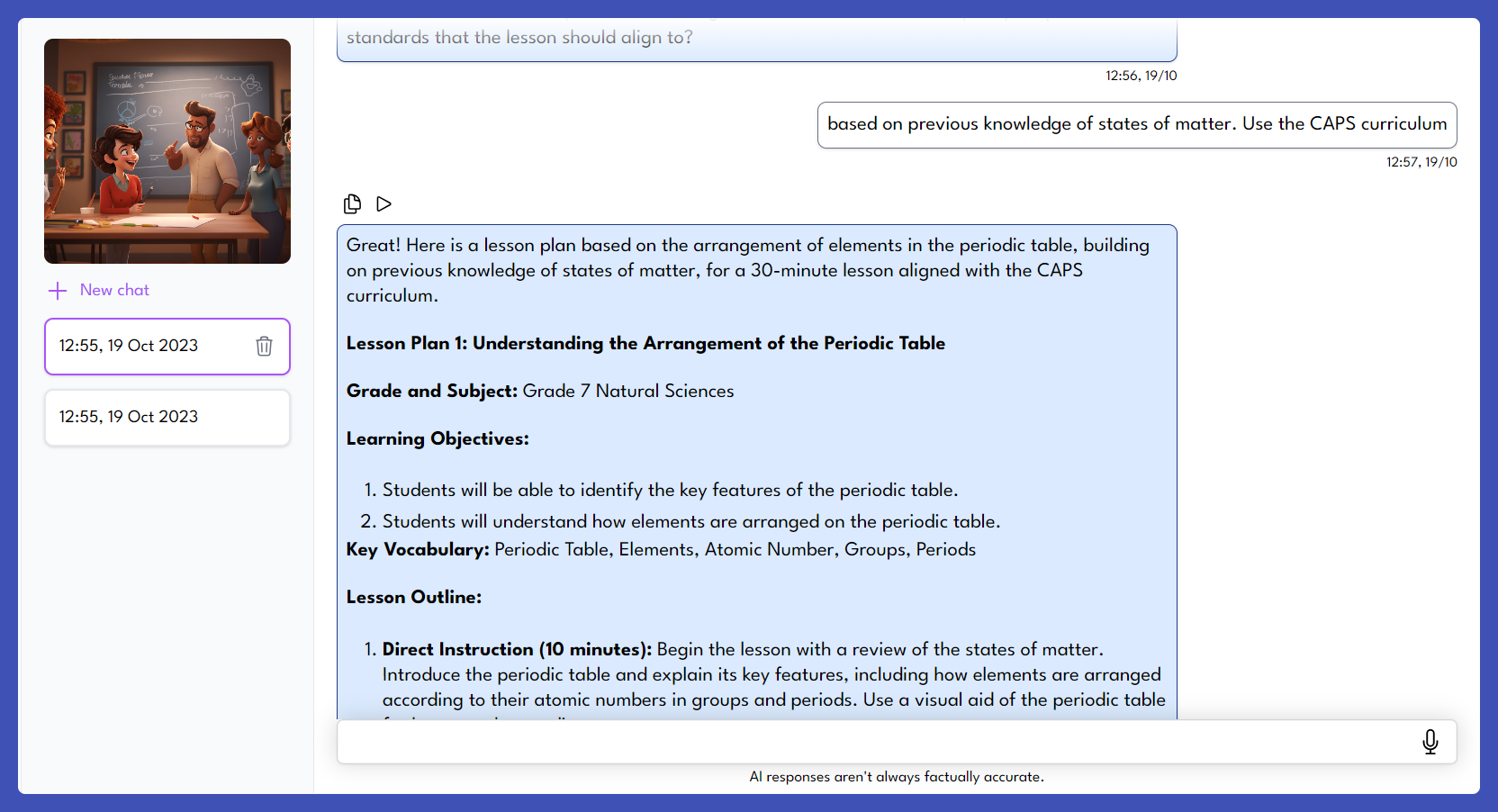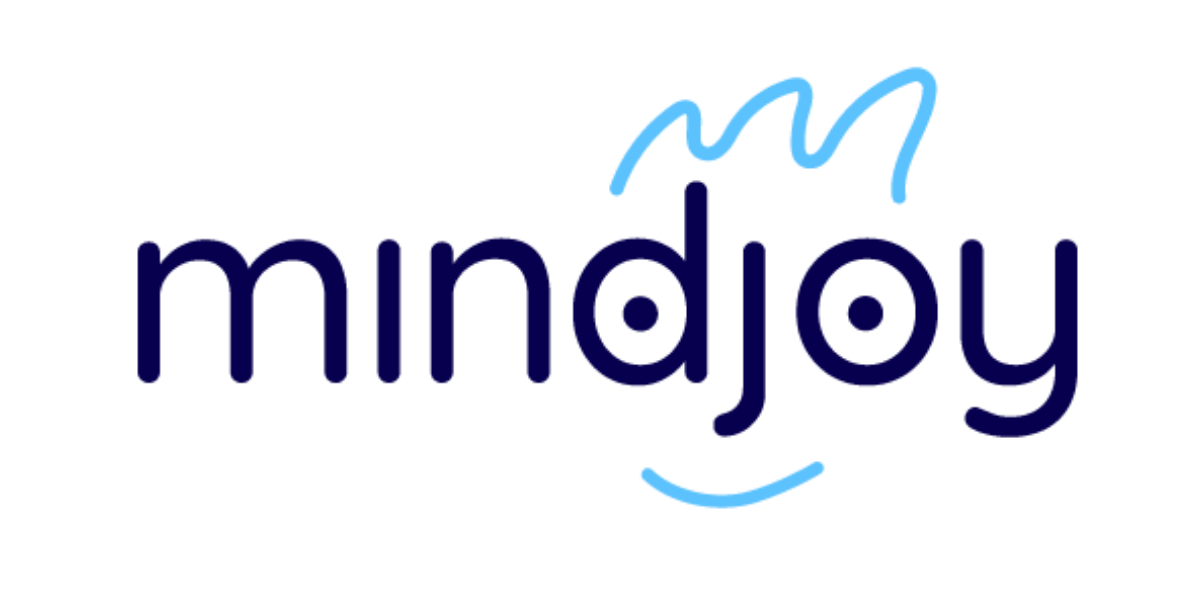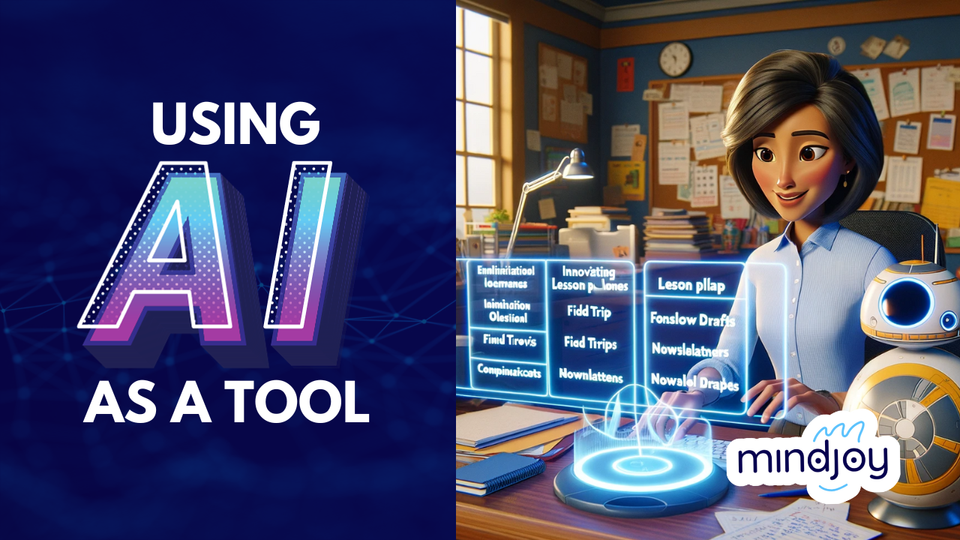Among the diverse applications of AI in education, its role as a tool in the classroom is particularly noteworthy. Dr. Ethan Mollick and Dr. Lilach Mollick, leading researchers in this field, emphasise the transformative potential of Large Language Models (LLMs) in education. Their insights are invaluable in understanding how AI can enhance teaching and learning without overhauling traditional methods.
AI as an admin assistant
When employed as a tool, AI primarily functions as an administrative assistant, a gem for educators grappling with the ever-increasing administrative workload.
For instance, AI can assist in generating innovative lesson plan ideas, suggesting field trip locations, drafting newsletters, permission slips, and even emails to difficult parents 😉. These tasks, while essential, can be time-consuming, and AI steps in to streamline the process.
Navigating the risks
Working with AI tools is not without its challenges. One significant risk is the potential for AI to generate incorrect but plausible information. Additionally, AI models can also carry inherent biases from their training data. Thankfully, educators can minimise the propagation of these biases through proper prompting.
Despite these risks, the benefits of integrating AI into the classroom are manifold. Platforms like Mindjoy offer safe and effective environments for teachers and students to explore AI's potential. The platform is designed with strong transparency, moderation, and pedagogically sound protocols, making it ideal for educational use.
Crafting effective AI prompts
An essential skill in working with AI is crafting effective prompts. This involves clearly defining the AI's role and goal, detailing the steps it should follow, setting up constraints, and personalising the approach based on individual needs.
Have a look at the following example 🧐

💡Pro Tip for Teachers
Software developers are used to automating parts of their jobs through writing code. Now teachers get to start thinking about their repetitive tasks in this way too. By creating an AI tool through writing and prompting, teachers can delegate routine and repetitive administrative tasks to the AI, freeing up more time for creative thinking, student interaction, and professional development.
🧑🏫Facilitation Notes
We encourage teachers to explore the AI tool's capabilities through trial and error, fostering a hands-on learning experience, and play! We also encourage organising collaborative sessions where teachers can share their experiences and tips with peers, promoting a community-based learning approach. Mindjoy hosts regular sessions online and can also support in coordination with schools to host some sessions as part of your monthly staff meetings.
AI as a tool in the classroom is not about replacing traditional teaching methods but enhancing them. By leveraging AI for administrative tasks, teachers can devote more time to what truly matters - engaging with students and nurturing their growth.

This blog is the first part in a series of 4 Approaches for using AI with students in your classroom. In the next blog we'll look at how you can use AI as a Tutor, so stay tuned.
Visit www.mindjoy.com to find out more about the different ways to use AI in the classroom.


